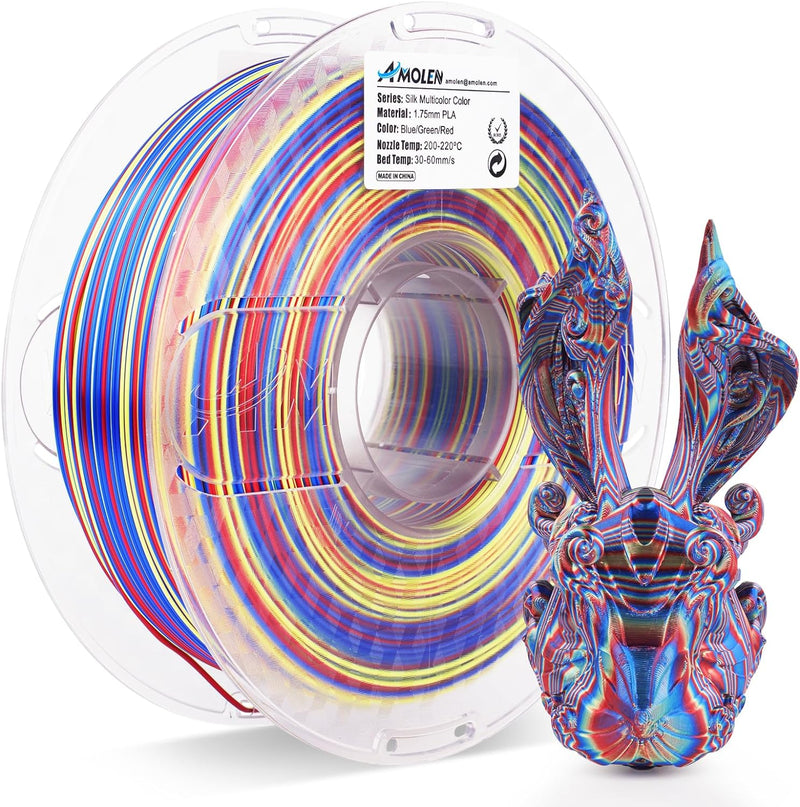Unlock Your Creativity: Discover the Best Sources for Premium 3D Printer Filament!
In the world of 3D printing, the quality of the filament used is paramount to achieving successful and aesthetically pleasing results. Whether you're a hobbyist crafting intricate designs or a professional engineer prototyping innovative solutions, the filament serves as the backbone of your 3D printing endeavors. As the popularity of 3D printing continues to rise, so does the demand for reliable and high-quality materials that can ensure your projects turn out exactly as envisioned. With numerous options available in the market, it’s crucial to navigate through the choices to find the best sources for premium 3D printer filament that will not only enhance the quality of your prints but also inspire your creativity.

Understanding 3D Printer Filament Types
When it comes to 3D printing, not all filaments are created equal. The most common types include PLA, ABS, PETG, and TPU, each with their unique characteristics and applications. PLA, or Polylactic Acid, is favored for its ease of use and environmentally friendly properties, making it ideal for beginners. Its low warping and excellent layer adhesion make it a go-to for detailed prints. On the other hand, ABS, or Acrylonitrile Butadiene Styrene, is renowned for its strength and durability, often used in functional prototypes. However, it requires a heated bed to prevent warping during the printing process. PETG, or Polyethylene Terephthalate Glycol, offers the best of both worlds, combining the ease of PLA with the strength of ABS, making it suitable for a variety of projects. Lastly, TPU, or Thermoplastic Polyurethane, is a flexible filament that is perfect for creating rubber-like parts. Understanding these filament types helps you make informed choices tailored to your specific project needs.
Factors to Consider When Buying Filament
Choosing the right 3D printer filament is not just about clicking "buy." Several crucial factors come into play to ensure you’re investing in quality materials. First and foremost is material quality; the filament should be manufactured to high standards, ensuring consistency in diameter and color. Variations can lead to clogs and inconsistent extrusions. Additionally, consider the diameter of the filament—most 3D printers use either 1.75mm or 2.85mm, and ensuring compatibility is key. Color options can also be a deciding factor, especially for artists and designers looking to create eye-catching prints. Furthermore, take time to read user reviews; they can provide insights into the filament's performance and reliability, helping you avoid costly mistakes. My friend Alex, a dedicated 3D printing enthusiast, always insists on checking reviews before making a purchase, which has saved him from several disappointing results. Ultimately, a little research can go a long way in ensuring you select the best filament for your projects.
Where to Find High-Quality 3D Printer Filament
Finding high-quality 3D printer filament is essential for achieving the best results in your printing endeavors. There are several avenues to explore when it comes to purchasing filament, including online marketplaces, specialty 3D printing stores, and local retailers. Each option has its own set of advantages and disadvantages, making it important to choose wisely based on your needs and preferences. Online marketplaces offer a vast selection of filaments from various manufacturers, which is a significant advantage for those looking to compare prices and options. However, the downside can be the challenge of assessing product quality without direct inspection.
Online Marketplaces
Shopping for filament on popular online platforms provides a wide selection and the benefit of customer reviews. These reviews can be invaluable, offering real-world feedback on filament performance and reliability. Additionally, online deals can often be more competitive, allowing you to stock up on your favorite materials without breaking the bank. However, it's essential to be cautious and choose sellers with established reputations to ensure you receive quality products.
Specialty 3D Printing Stores
For those serious about 3D printing, specialty stores that focus solely on 3D materials can be the best option. These retailers often provide expert advice and dedicated customer service, which can be particularly helpful for beginners navigating the world of filaments. The staff typically have firsthand experience with the products they sell, allowing them to offer tailored recommendations based on your specific printing needs. Although prices may be slightly higher than online marketplaces, the value of expert guidance and quality assurance often makes it worthwhile.
Local Retailers
Purchasing from local shops comes with its own set of perks. The immediate availability of filament allows for instant gratification, especially when you’re in the middle of a project. Plus, being able to inspect products before buying can mitigate the risk of receiving subpar materials. Local retailers often have a more limited selection compared to online options, but building a relationship with them can lead to personalized service and potential discounts on future purchases. My friend Sarah swears by her local shop for these reasons, claiming that the owner always knows exactly what she needs.
Key Takeaways on Choosing 3D Printer Filament
In conclusion, selecting high-quality filament is crucial for achieving successful 3D printing outcomes. Understanding the different types of filaments, considering key purchasing factors, and exploring various sources for buying filament will empower you to make informed decisions that enhance your creative projects. Whether you opt for the convenience of online shopping, the expertise of specialty stores, or the immediacy of local retailers, the right filament can significantly impact the quality and success of your prints. So go ahead, explore your options, and unleash your creativity with the best 3D printer filament available!








